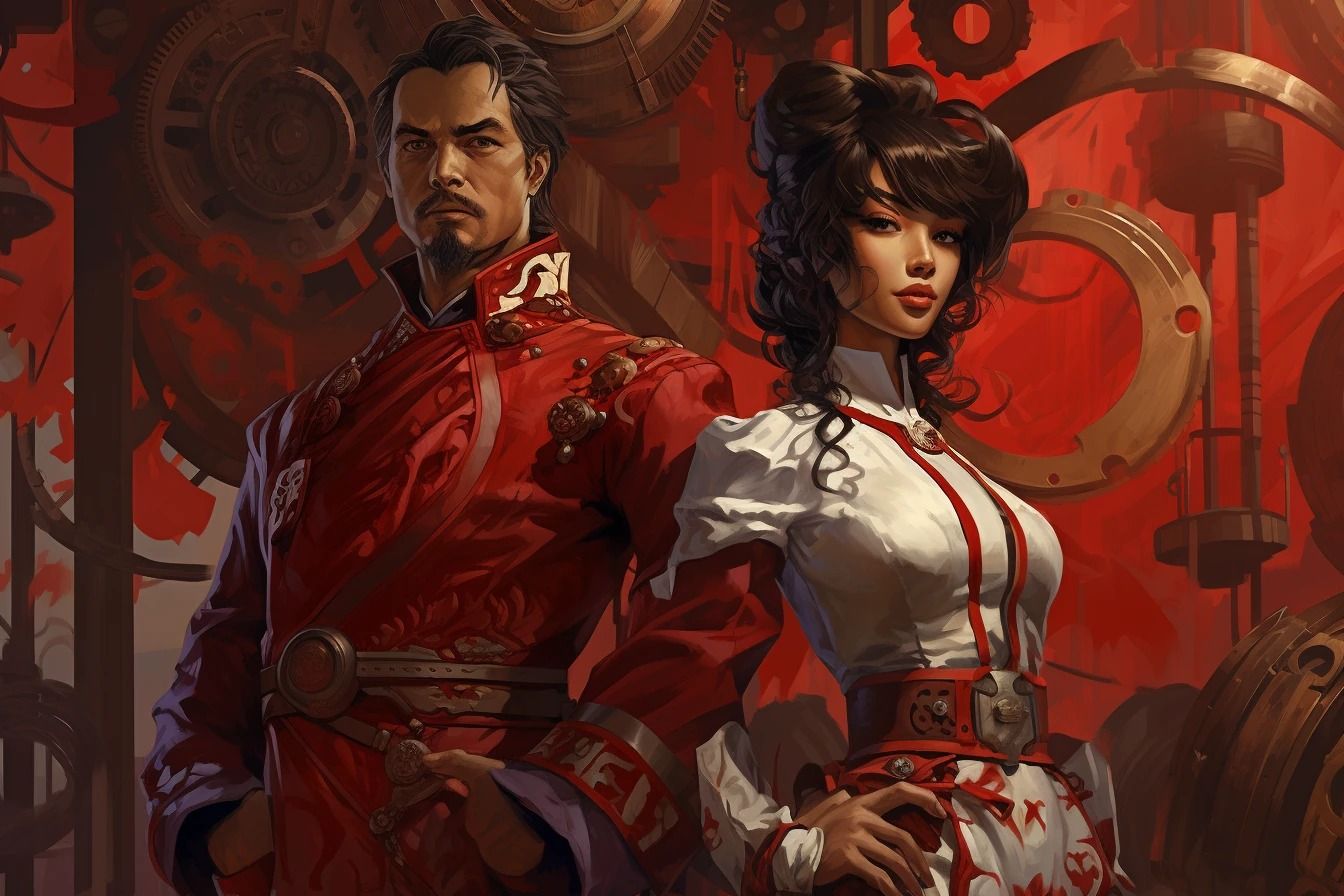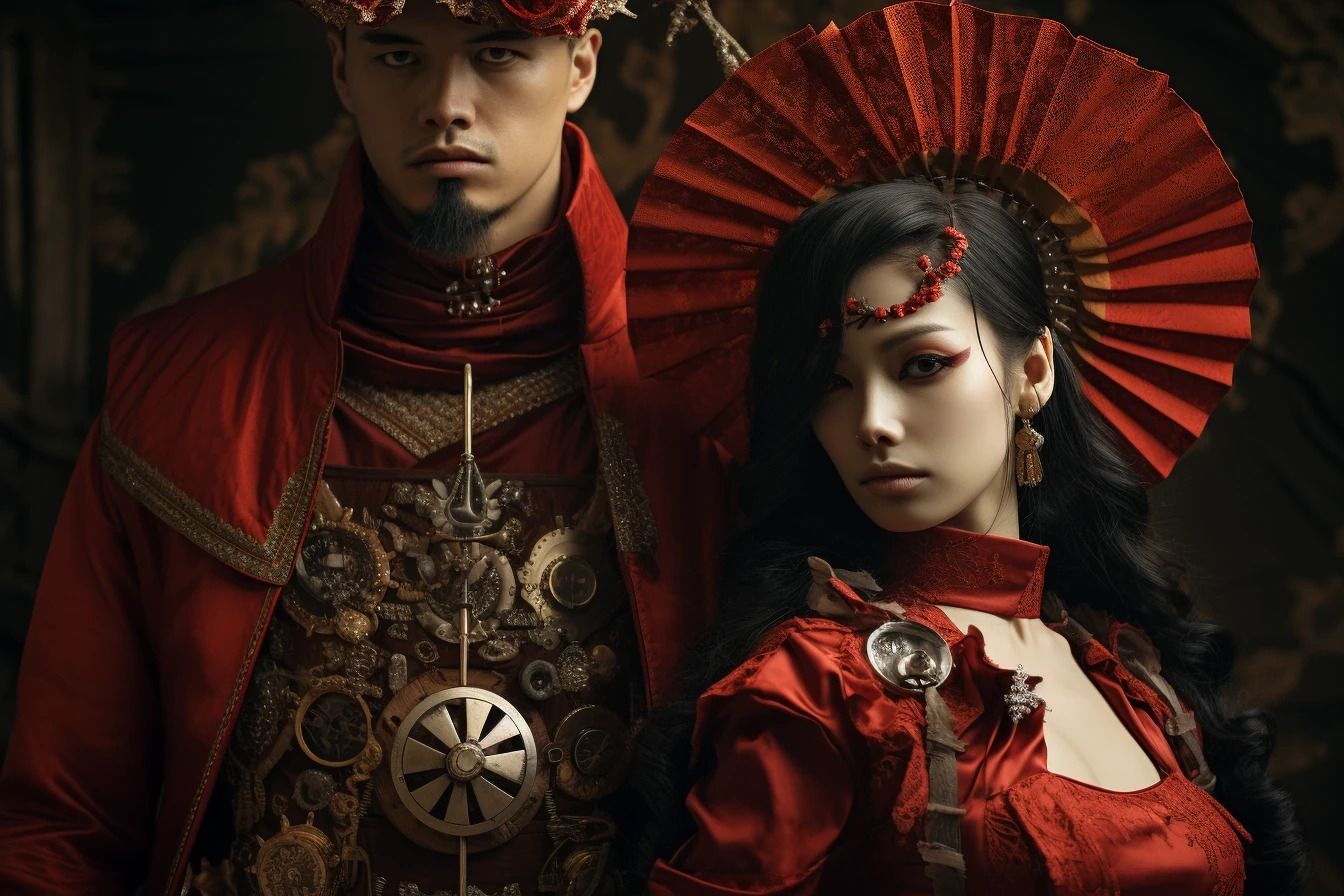Silkpunk: Mix science fiction and fantasy, drawing inspiration from classical East Asian history
Like steampunk, silkpunk is a mixture of science fiction and fantasy, with the dosage of each not always fixed. Steampunk is inspired by the technological aesthetic of brass and chrome of the Victorian era, while silkpunk is inspired by classical antiquity in East Asia.

Like steampunk, silkpunk is a mixture of science fiction and fantasy, with the dosage of each not always fixed. Steampunk is inspired by the technological aesthetic of brass and chrome of the Victorian era, while silkpunk is inspired by classical antiquity in East Asia. While the technological vocabulary and grammar of steampunk are based on chrome, glass, and steam, and on mechanical precision and rigidity - reflected in the appearance of the corseted body - the vocabulary and grammar of silkpunk are based on organic and biomechanical materials.
The father of silkpunk?
One of the best-known authors in the genre is Asian-American Ken Liu, writer of many speculative fiction stories. His works have been adapted into various media and translated into more than 10 languages. Recent projects include The Message, from 12 Laps and FilmNation Entertainment; Good Hunting, adapted into an episode of the first season of the Netflix series Love, Death + Robots; and Pantheon, an AMC production inspired by a series of his short stories. 'Good Hunting', a 2012 short story, explores the friendship between a young Chinese engineer and a Kitsune, set in a rapidly industrializing colonial Hong Kong.
In creating the silkpunk aesthetic, I was influenced by the ideas of W. Brian Arthur, who articulates a vision of technology as a language. The task of the engineer is much like that of a poet in that the engineer must creatively combine existing elements of technology to solve novel problems, thereby devising artifacts that are new expressions in the technical language. [Here]
Art but punk
The central theme of the story is the concept of technology as a vehicle for oppression, but also for the emancipation of marginalized figures, which is also somewhat typical of cyberpunk. But there are other themes as well, such as the clash between local traditions and foreign culture, or between the speculative possibilities of technological development and the realities of its use.
The only constant is change" is not only a valid description of our lives; it is also the North Star of the Dynasty aesthetic. My books are about change, evolution, revolution, transformation-in other words, the greatness of the human spirit, which cannot be reduced and crystallized into a single form, but can only be expressed through movement." [here]

What silkpunk is?
The silkpunk novels are about rebellion, resistance, reappropriation and renewal of tradition, and defiance of authority, all cornerstones of the 'punk' aesthetic. Liu does not like to call his genre 'Asian-influenced fantasy', preferring the term 'silkpunk', a term he first used in the first episode of the Dandelion Dynasty series in 2015. Like cyberpunk, steampunk, and solarpunk, silkpunk represents a blend of two equally important elements: silk, an aesthetic style inspired by the mythology, history, and culture of the Asia-Pacific region, and punk's tendency to question, deconstruct, and rebel. Cyberpunk, an outgrowth of the 1970s technology boom, is a critique of the hegemony of tech tycoons and social inequality; silkpunk seeks to excavate the buried roots of tradition and exorcise the ghosts of colonialism from the Asia-Pacific region.
The average human’s inbuilt algorithm for rhetoric is not so different from that of an artificial intelligence: We’re trained on the most readily available data, and we tend to follow the same pattern once a model is established. The work of expanding the linguistic and imaginative repertoire of a community thus falls on the shoulders of the writer. Liu’s work takes a stab at the monumental feat of expanding the boundaries of language and literary tradition. First, by grounding his work in the beauty of a multitude of cultures, he broadens the lexicon of the English language. Second, it can be also read as an act of decolonization: an attempt to free sci-fi and fantasy from its overreliance on the Anglophone literary tradition. [Here]
Silkpunk's flying machines
However, silkpunk does not simply mix technological, fantasy, and Asian elements to create a formless amalgam of elements that pulls the reader in an unclear and meaningless direction. Silkpunk's flying machines, such as giant kites and hot air balloons, are directly inspired by classical East Asian sources. In silkpunk, airships are inspired by living organisms. Propelled by giant feathered rudders and illuminated by their hulls at night, these silk airships move across the sky in a manner reminiscent of jellyfish swimming through an empyrean sea, the internal gas bags of the elevator contracting and expanding to maintain balance.

Silkpunk premodern technology
But the whole thing has a technological heart, a technological language that gives a new perspective on politics and history, and tells of change, rebellion and revolution, the 'punk' part. Silkpunk is technology applied to contexts and environments - biological, historical and cultural - that we don't normally think of as 'technologies'. In his novels and short stories, Liu carefully examines how premodern technology and traditional context can interact. The emphasis on 'technology' comes through visual and narrative language. Liu invents new machines and works on how these machines can be derived from technologies that already exist in the world, and how they change the options available to characters and affect their thinking. The silkpunk aesthetic informs his stories and adds a touch of magic.
Essential Silkpunk bibliography
- The Poppy War by R.F. Kuang
- Jade City by Fonda Lee
- The Grace of Kings by Ken Liu
- The Black Tides of Heaven by Neon Yang
- The SEA Is Ours: Tales of Steampunk Southeast Asia by Nghi Vo
- The Order of the Pure Moon Reflected in Water by Zen Cho
- The Wall of Storms (The Dandelion Dynasty) by Ken Liu
- Jade War (The Green Bone Saga) by Fonda Lee
- The Tea Master and the Detective by Aliette de Bodard
- The Red Threads of Fortune (Tensorate) by J.Y. Yang
- Stormdancer (The Lotus Wars) by Jay Kristoff
- Rebel Skies (Rebel Skies) by Ann Sei Lin
- The Dragon Republic (The Poppy War) by R.F. Kuang
- Revolution by Erica David
- Ninefox Gambit (The Machineries of Empire) by Yoon Ha Lee
- The Descent of Monsters (Tensorate) by Neon Yang
- Marked by Sin (The Gatekeeper Chronicles) by Jasmine Walt
- Rebel Fire (Rebel Skies) by Ann Sei Lin
- The Ascent to Godhood (Tensorate) by Neon Yang
- Gunpowder Alchemy (The Gunpowder Chronicles) by Jeannie Lin
- Princess Mononoke Film Comic, Vol. 1 by Hayao Miyazaki
- Sakura Taisen, Vol. 01 by Ohji Hiroi
